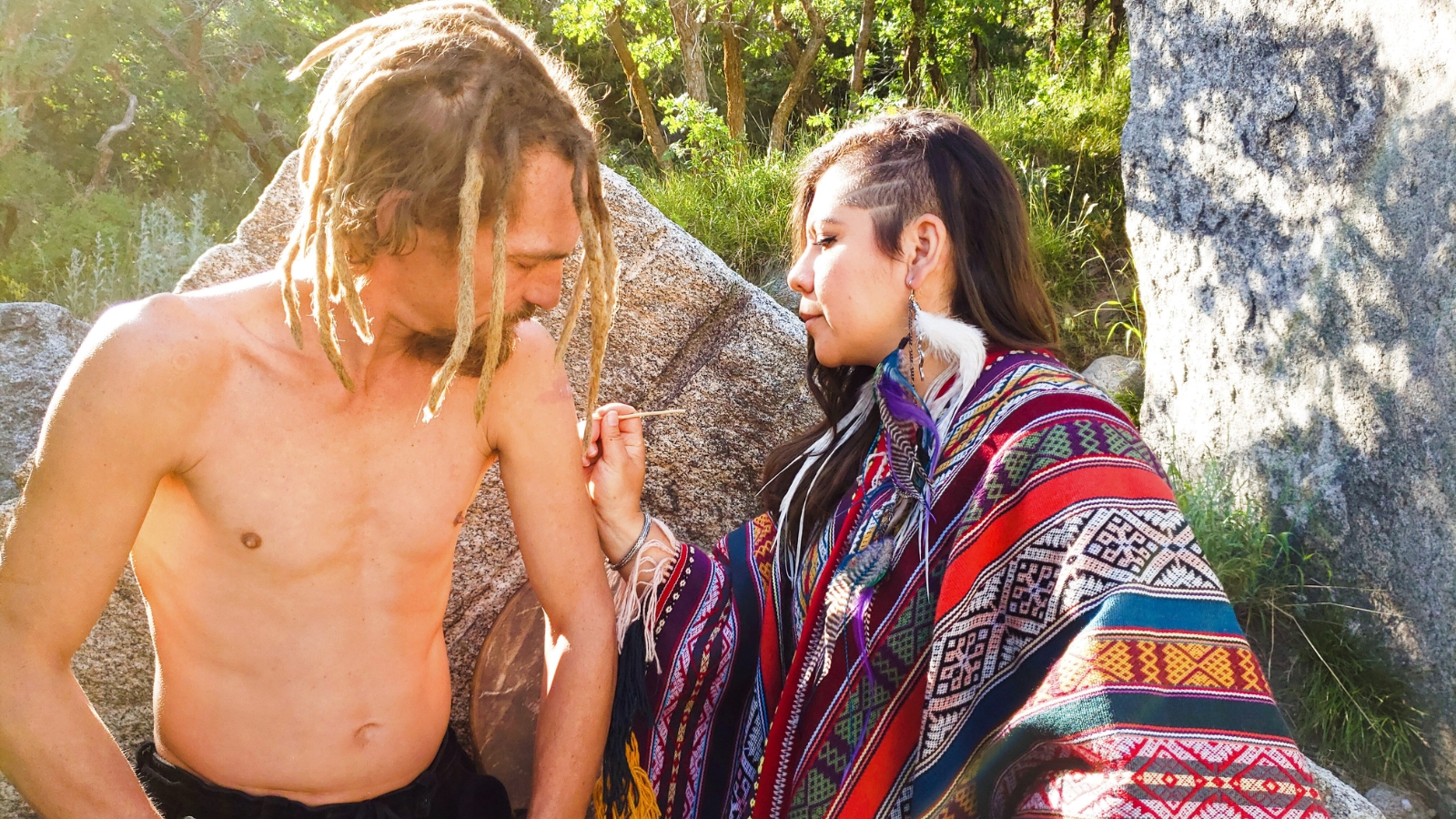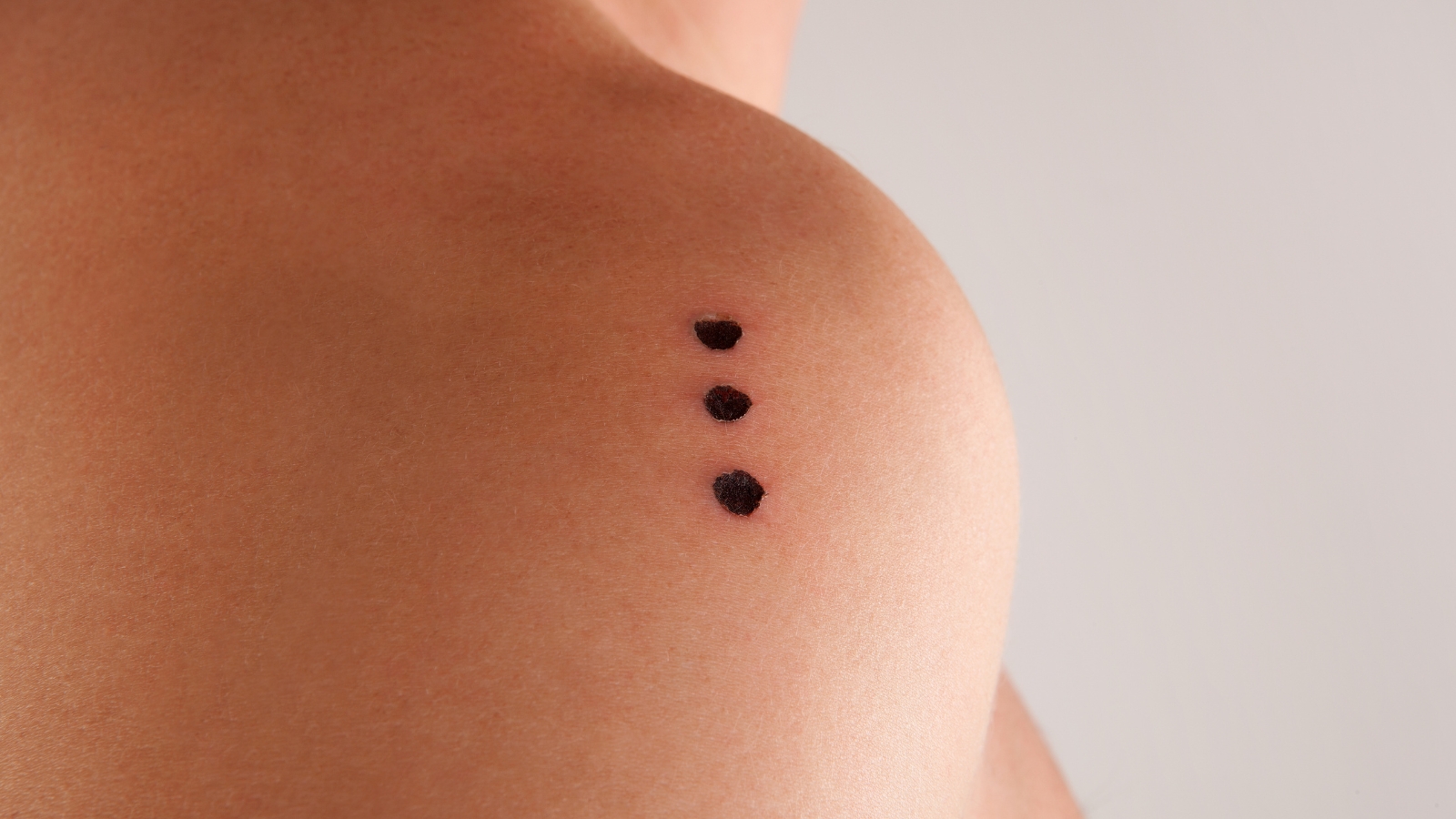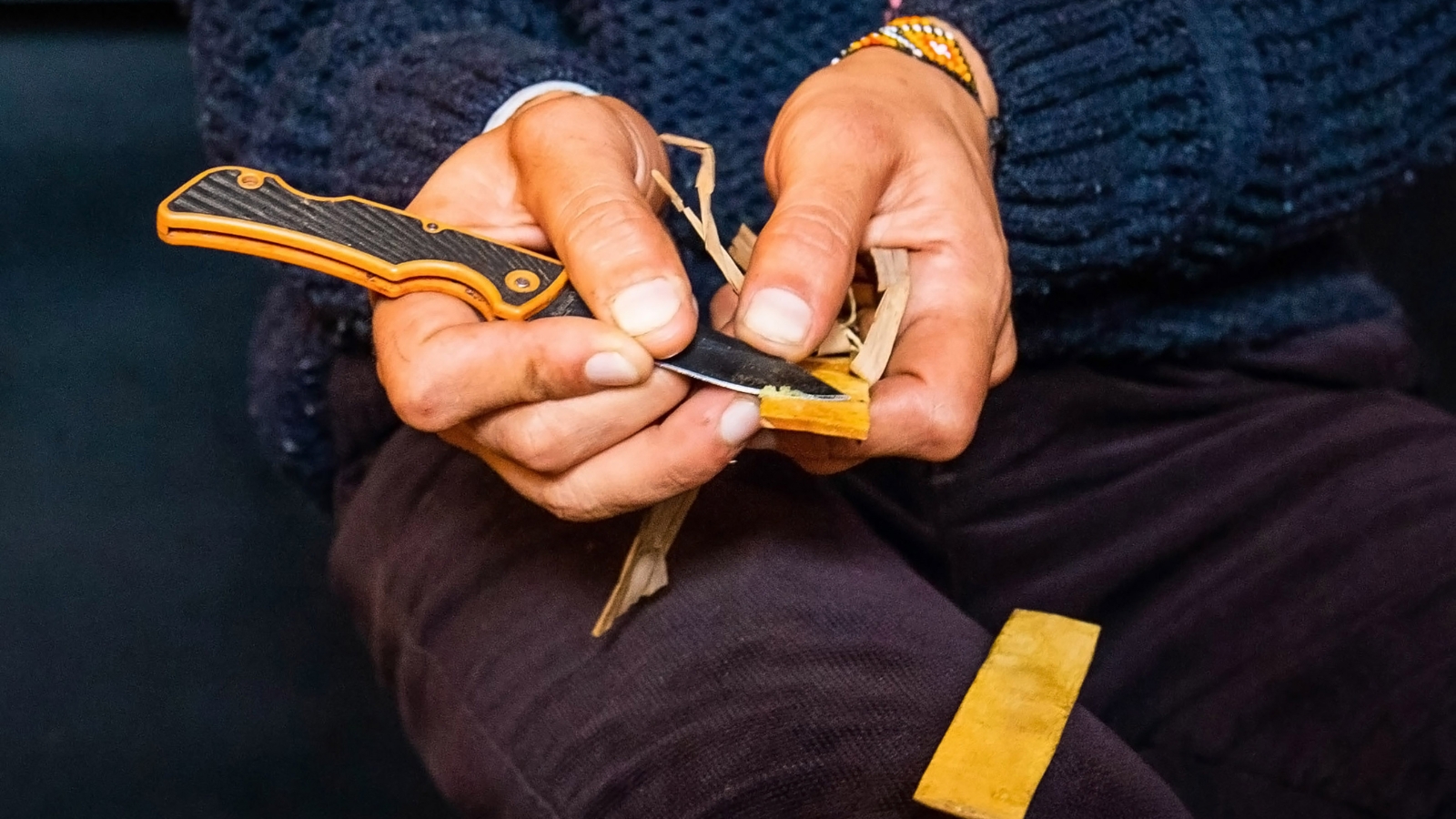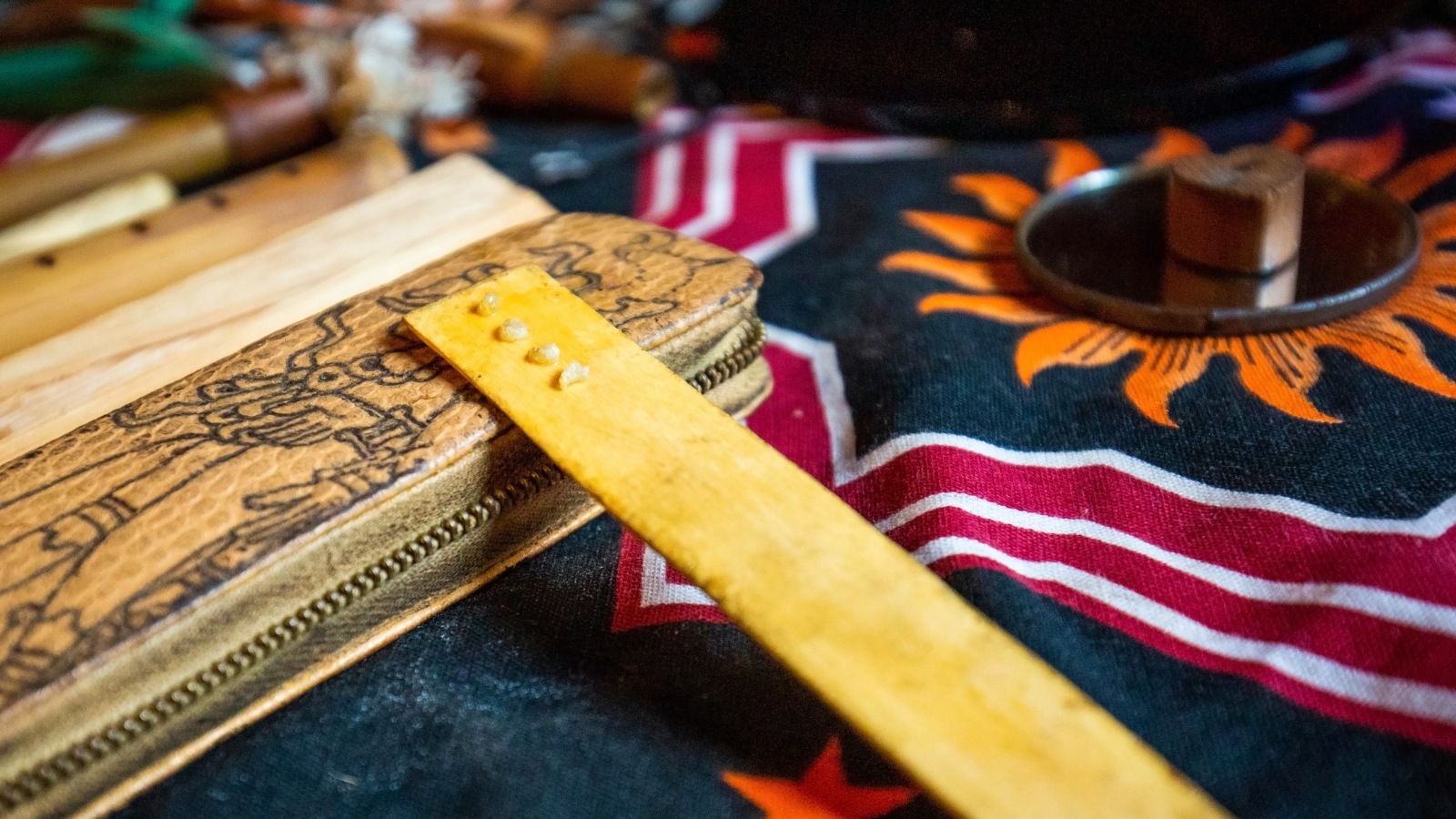Vaccine (noun): a substance used to stimulate the production of antibodies and provide immunity against one or several diseases, prepared from the causative agent of a disease, its products, or a synthetic substitute, treated to act as an antigen without inducing the disease.
The ‘Herd Immunity’ / ‘Herd Mind’ and ‘Anti-Vax’ / ‘Pro-Safe Vax’ divide is the polarizing new Brexit or Trump saga post-pandemic. With the choice of being boxed as either brain-washed or selfish, somewhere amidst the confusion we decided that there was no longer room for nuance.
In the weird and wonderful arena of life where change is the only constant and uncertainty is the only certainty – it might come as no surprise that as a medicinal frog slime brimming with bioactive peptides, Kambo has earned itself the nickname of ‘nature’s vaccine’. But is this a bold and dangerous claim, or might there be something to it? Is Kambo nature’s vaccine?
There is certainly no shortage of anecdotal reports of the amphibian’s attractions – from stronger athletic performances, to ‘resetting’ the mind for mood disorders, and a lack of ensuing infections. However, in the world of science, standalone anecdotes don’t quite cut it. Yet in this emerging space, neither has the evidence quite caught up. In addition, the reference to Kambo as a ‘vaccine’ has different expressions in traditional and modern settings.


Kambo’s Cleansing Context
The secretions of the Giant Monkey Frog Phyllomedusa bicolor are used by populations in the Amazon regions as a medication for infections, to prevent diseases, as a physical and mental invigorator for hunting and wellbeing, and as an analgesic [1].
The indigenous practice supposedly diffused into urban Brazilian environments in the 90s, thanks to a rubber tapper who had spent a few years with the Katukina people. It’s also reported that the networks of Brazilian Ayahuasca churches, specifically the Santo Daime, were instrumental in the spread both at home and today, internationally [2].
Applying Kambo ritualistically involves making a few small skin lesions with a superficial incense burn. This is important as Kambo can kill when taken orally, and the subdermal application may allow for plasma levels of the compounds to have rapid onset effects.
The use of Kambo as a stimulant by indigenous populations of the upper Juruá River was first documented in 1925 by the missionary Constantin Tastevin [2]:
“When an Indian becomes ill, thin, pale and swollen; when he is long unlucky in hunting, it is because he has in his body a bad principle which must be expelled… [when] vaccinated with the ‘milk’ of the frog… Soon violent nausea and diarrhea starts; the bad principle leaves his body by all the exits. As a result… no animal escapes from his sharp sight, his ear perceives the smallest noises, and his weapon does not miss its mark.”
In this sense, the toxin expels the toxins: Kambo is thought to expel ‘bad influences’ and restore optimal health. In the process, Phyllokinin lowers blood pressure, Sauvagine leads to diarrhea, and Dermorphine and other neuro-active peptides enter the nervous system, perhaps contributing to the euphoric feelings reported after a session [3].
It is predominantly the naturally occurring Adenoregulins and Dermaseptins that have been found to possess antibacterial, antifungal, and anti-cancer properties. These compounds contribute to the idea of Kambo as a ‘vaccine’ against infections [4].
However, these properties are solely derived from animal studies and to date, no clinical Kambo trials have been conducted to evaluate these properties for human conditions – partly because of the side effects, and partly due to economic viability when it comes to patenting and profiting from complex natural compounds.

Metamodern Medicine Making
Boasting such a diverse array of applications, the Amazonian enigma has piqued the interest of many parties seeking to both study and profit from this concoction of chemicals since the 1980s. The sticky goo is rich in biologically active peptides that are either identical or highly homologous to hormones, neurotransmitters, and other bioactive proteins – over a hundred of which have been identified to date [5].
The 3 Main Bioactive Peptides in Kambo [2]:
| Compound | Physiological Effects | Subjective / Anecdotal Representation |
| Caerulin | Nausea, vomiting, bile secretion, sweating – pro-inflammatory response / activation of host immune system | Cleansing and detox |
| Sauvagine | Activation corticotropic hormones, hypotension, diarrhoea – involved in stress response | Immune-enhancing, cleansing |
| Dermorphine | Activation endogenous opioid system, fearlessness, analgesia, endurance | Stamina, euphoria, confidence |
Despite the lack of human trials, in vitro studies have shown evidence of anti-viral activity, such as the ability of Dermaseptins to instigate activity against HPV, HSV and inhibition of HIV attachment to endometrial cells. In this sense they likely modulate the host defense system [6].
The exact mechanisms of action are not completely understood, but it is known that some of the toxins dilate blood vessels and increase the permeability of the blood-brain barrier, and it has been reported that some of the peptides exhibit antimicrobial properties (e.g. against Pseudomonas aeruginosas), as well as inhibiting protozoa (e.g. Trypanosoma cruzi). This suggests a role for amphibians in the development of new anti-microbial drugs [7].
However, as with most traditional ritual practices, there are also holistic effects – including the possible provocation of endogenous healing responses. Kambo’s effects are mediated by both the parasympathetic and sympathetic nervous systems, involving massive shifts in activity and balance within the autonomic nervous system (ANS) [2].
This is probably what contributes to some reports of alterations in consciousness, despite Kambo being classed as ‘non-psychoactive’. Such shifts in the balance of the ANS have been known to provide additional healing for many hypertension and stress-related disorders [2]. With this in mind, perhaps Kambo could be considered a protective ‘vaccine’ against the effects of stress.
The practices of isolated pharmaceutical compounds and holistic natural medicines occasionally adopt two different angles. Whereas many synthetic medications work to suppress symptoms – symptoms are seen in many holistic contexts to be part of the body’s self-healing or purging process. In a clinical context, this self-healing mechanism is registered but equally sidelined as part of the mysterious placebo (mind-body consciousness) response.
This brings a few potential problems with pharmaceutical production to the fore – including difficulty in recreating the intricate work of mother nature by trying to isolate compounds that work synergistically in context, and the increasingly likely need to restructure the format of clinical trials to accommodate holistic results.

Holistic Hybrid Hopes
So, is voluntary ‘evenomation’ therapeutic or toxic?
Like a vaccine, and many other medicines – it’s a bit of both. The ‘appeal to nature fallacy’ purports the idea that just because it’s natural, it’s more likely to be safe. But it’s not as clear cut as simply stating that natural is always good, or that synthetic pharmaceutical must be bad.
For example, the synthetic pharmaceutical model has the potential to spread the benefits of Kambo more sustainably. On a large, international scale, the growing demands of commercialization and overconsumption of a natural substance creates stress within the ecosystem.
Kambo is also not risk-free and is contraindicated in certain cases including pregnant women, hypotensive syndromes or cardiovascular conditions. While many of the side-effects are transient, such a potent medicine is best administered by an experienced and knowledgeable set of hands.
In many traditional uses of Kambo, it is described as self-applied by the hunter. It’s only in the last few years, in the context of Western appropriation and diffusion that ‘shamanistic’ descriptions have found themselves interlinked. Apparently due to a myth reported by anthropologists Labate and Lima when they conveyed the indigenous beliefs that before you can capture a frog, you have to talk to it, and only a shaman can capture the frog [2].
This perhaps harks back to the symbiotic relationship of Amazonian tribes to their environments. In the traditional setting, the frogs are not harmed during the process of collection which involves expertly tying them down to collect the waxy secretions, before releasing the toad back into its habitat.
There is a difficult side to capitalism where this wider relationship has quite clearly been lost. When the priority must be commercial viability in order for opportunity to exist, such a narrow goal has been seen to compromise longer-term on the very market enterprise should seek to serve: both people and planet.
Furthermore, calculating concepts such as herd immunity are complex mathematical processes that are constantly in flux. Kambo’s therapeutic potential is wide-ranging and promising. But applying this traditional medicine to the modern world may require a paradigm shift in the perceptions and frameworks we currently use to measure its effects.
One such shift could see us transition from an unsustainable Friedman model of Capitalism based on a reductionist selfish-gene hypothesis, towards a more holistic Elkington model, based on all of people, planet and progress.
References
[1] Haddad, V (May 2020) Kambo: An Amazonian Enigma. Retrieved from: https://pubmed.ncbi.nlm.nih.gov/32566126/
[2] Winkelman, M (December 2019) Vaccination with Kambo against bad influences: process of symbolic healing and ecotherapy. Retrieved from: https://www.researchgate.net/publication/337944160_Vaccination_with_Kambo_Against_Bad_Influences_Processes_of_Symbolic_Healing_and_Ecotherapy
[3] Erspamer, V (September 1993) Pharmacological Studies of ‘Sapo’ from the frog Phyllomedusa bicolor skin: a drug used by the Peruvian Matses Indians in shamanic hunting practices. Retrieved from: https://pubmed.ncbi.nlm.nih.gov/8266343/
[4] Amiche, M (2012) Anti-tumour and angiostatic activities of the antimicrobial peptide dermaseptin B2. Retrieved from: https://journals.plos.org/plosone/article?id=10.1371/journal.pone.0044351
[5] Alamos, M (August 2020) Life-threatening risk of using Kambo in alternative medicine. Retrieved from: https://oce-ovid-com.ezp.lib.cam.ac.uk/article/01586158-202008000-00018/HTML
[6] Bartels, E (November 2019) Dermaseptins, multifunctional antimicrobial peptides: a review of their pharmacology, effectivity, mechanism of action, and possible future directions. Retrieved from: https://www.frontiersin.org/articles/10.3389/fphar.2019.01421/full
[7] Leite, J (April 2005) Phylloseptins: a novel class of anti-bacterial and anti-protozoan peptides from the Phyllomedusa genus. Retrieved from: https://pubmed.ncbi.nlm.nih.gov/15752569/















